The Bedlington Terrier is a mid-sized breed from North East England with origins as a hunting dog. With its frolicking, vivid personality, and unique looks, you might be interested in owning one of these dogs.
Yet how much does a Bedlington Terrier shed?
Bedlington Terriers are low-shedding dogs with a short coat that’s soft yet coarse. However, grooming the Bedlington Terrier will require time and effort due to the abovementioned unique coat and this dog’s interesting breed standards.
I’m sure you’re eager to learn more about the Bedlington Terrier. If so, this is the article for you. Ahead, I’ll explain more about the Bedlington Terrier’s shedding habits and what grooming this dog is like.
Recommended: Go here to see our top-rated dog hair blow dryers
Bedlington Terrier Shedding
The Bedlington Terrier sheds very little, making this breed a great choice for a furry companion. Some have even called the dog practically shed-proof.
Of course, every dog sheds, if not seasonally, then throughout the rest of the year. That’s the case with the Bedlington Terrier as well.
If you’re used to tidying up small tufts of dog fur around the house, the Bedlington Terrier won’t leave you with that kind of a mess, though.
The reason this breed is low shedding is twofold.
First, both the Bedlington Terrier’s coat type and length are advantageous.
Let’s discuss its coat first. Most dog breeds have either soft or hard, coarse fur, but not the Bedlington Terrier. It has both!
The breed standards for the Bedlington Terrier stop short of calling this dog’s coat wiry but do say the fur feels crisp and hard. Harder coats tend to shed less frequently than softer ones, as is the case with other Terriers.
Then there’s the coat length of the Bedlington Terrier.
Its breed standards mention that when competitively showing this Terrier, their coat should be maintained to a length of no greater than an inch.
Its body will be very close-cropped, looking almost like someone gave this dog a buzzcut, and its fur is just starting to grow back. The head, ears, and legs are naturally fuzzier than the rest of the body.
Since its fur is so short overall, the Bedlington Terrier has less hair to release. So even if you let your Bedlington Terrier get a bit fluffier, its shedding shouldn’t increase much due to the fur texture.
Recommended: Go here to see our top-rated dog hair blow dryers
Grooming Your Bedlington Terrier
The Bedlington Terrier requires extensive, regular grooming, especially if you want yours to match show dog standards.
Let’s start with the relatively easy part, which is brushing your Bedlington Terrier.
You only have to do this once per week, maybe twice if your dog’s hair is especially unruly. Use a slicker brush for the brush’s protective tips that won’t hurt the Bedlington Terrier’s skin.
Brush your Bedlington Terrier in the same direction its coat grows. Don’t apply too much pressure when brushing.
Here’s a bit of good news: there’s no need to hand strip the Bedlington Terrier.
If you don’t know what hand stripping is, I talked about it in my post on the Lakeland Terrier. It’s a method of pulling out loose fur by hand. It doesn’t hurt your dog, but it’s time-consuming, so it’s good that you can skip it.
The Bedlington Terrier’s fur grows quite quickly, which means you’ll have to trim, shave, and shear this breed often.
The parts of its body that you should shave are the stomach, tail, the tops of the ears, and the sides of the head. The bottoms of the ears should retain their fur, which will give them a fluffball appearance. The head should have fur from the top all the way to the dog’s muzzle.
When shaving sensitive areas, use a #30 blade, especially around the ears. For the rest of the body that needs shaving, a #40 blade suffices.
Then you can shear the Bedlington Terrier’s body, specifically the sides of the dog’s shoulders and neck to where its elbows begin. For healthy coats, you can use a #4 blade or a #5. A #7 blade is also a good choice.
Make an indent at the top of each shoulder using scissors. You can also trim the Bedlington Terrier’s tail if you’d rather not shave it.
The legs must be trimmed rather than shaved. First, at the back of the dog’s legs to its hocks, trim down the middle, creating a line. Then switch to clippers with a #7 blade for the chest, which should be trimmed, so it blends in well to the shaved area near the front of the dog’s legs. This will give your Bedlington Terrier a more rectangular shape, as an FYI.
You can avoid unappealing shelf lines by trimming its ribcage with scissors and blending this area with its shoulders.
The hair around the hips should also be close to the body to maintain this dog’s unique silhouette.
Now you must do what is arguably the most difficult part of grooming this dog: trimming your Bedlington Terrier’s head and face.
Aim your scissors, so they’re parallel to the side of the dog’s face. Then make a line from its eye to its ear with your scissors, narrowing the hair, so it creates a mohawk look. Take care to avoid getting too close to the dog’s ears or eyes when cutting.
Since the Bedlington Terrier’s hair can curl, you might have to trim around its mouth, where curly hair tends to be more prominent. Hold your dog’s head firm so you can trim this sensitive area.
If you’re not comfortable with the extensive trimming and shaving that’s required to maintain the Bedlington Terrier’s coat, you can always take your dog to a groomer. Keep in mind, though, that this breed grows its fur fast, so you’ll be at the groomer’s a lot!
Is the Bedlington Terrier Right for You?
Hmmm. You love that the Bedlington Terrier barely sheds, but its upkeep sounds time-intensive and difficult.
If you’re torn on whether the Bedlington Terrier is the right dog for you, allow me to make your decision easier in this section!
The Bedlington Terrier is named after Bedlington, Northumberland, England, its original home. Before it got that name, the Bedlington Terrier was called the Rodbury or Rothbury Terrier, which lasted until 1825.
The earliest Bedlington Terriers might have lived in 1782. At the time, the dog was largely used for hunting, although it quickly became favored for dog sports, racing, and being a great companion.
The American Kennel Club calls the Bedlington Terrier loyal and charming. They’re fun, fast, energetic dogs that will keep watch over your family as a guard dog.
Here’s a video courtesy of the AKC that talks further about the Bedlington Terrier.
The average size of the Bedlington Terrier is 17.5 inches, so the breed is not exactly apartment-friendly. However, homeowners should give the Terrier room to play and romp around, such as a fenced-in backyard.
Once they’re tired out, the Bedlington Terrier will be happy to relax with you. Even when under-exercised, this breed won’t become mischievous.
Bedlington Terriers do best with dogs they’re socialized with from an early age, although they generally don’t like dogs of the same gender as them without extensive socialization. You should also raise them with other household pets such as cats if you want a harmonious relationship.
Its sweet personality and love of play make the Bedlington Terrier a wonderful pet if you have children. However, this dog is big enough that it shouldn’t be intimidated by rambunctious kids.
Even better is that the Bedlington Terrier is a rather quiet dog, barking only to alert you of potential danger.
And last but not least, even though all dogs can cause allergies, this breed is generally considered to be hypoallergenic given how low-shedding they are. So they’re ideal if you’re looking for a dog that’s less likely to upset any pet-related allergies you may have.
Recommended: Go here to see our top-rated dog hair blow dryers
Bottom Line
The Bedlington Terrier is a mid-sized dog from England that was bred to hunt. Their short coat with a hard texture keeps this breed low-shedding. However, you will spend a lot of time trimming and shaving your dog, considering the Bedlington Terrier’s fur grows fast.
With its unique appearance and huge heart, the Bedlington Terrier could be just the four-legged friend you’ve always wanted.
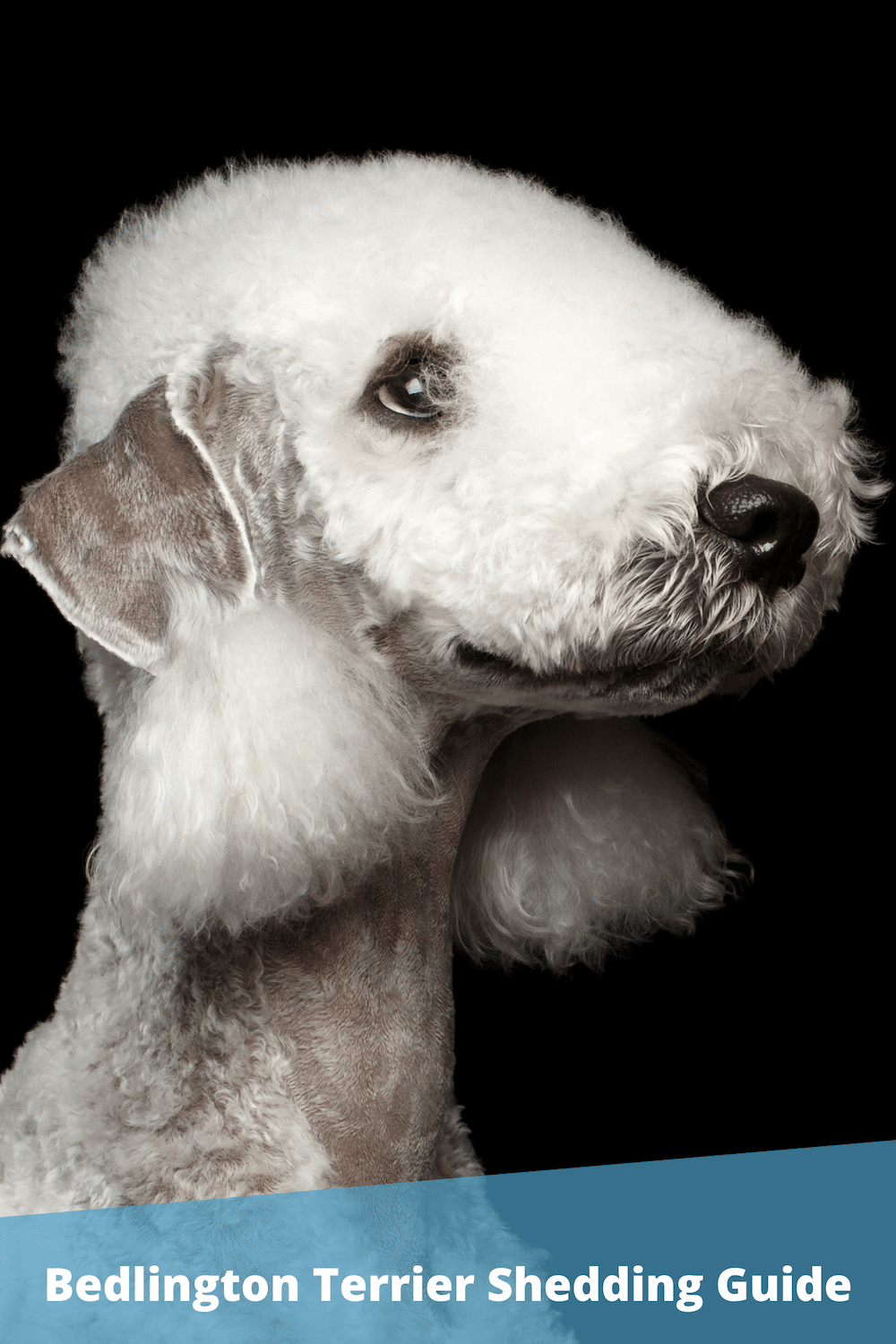

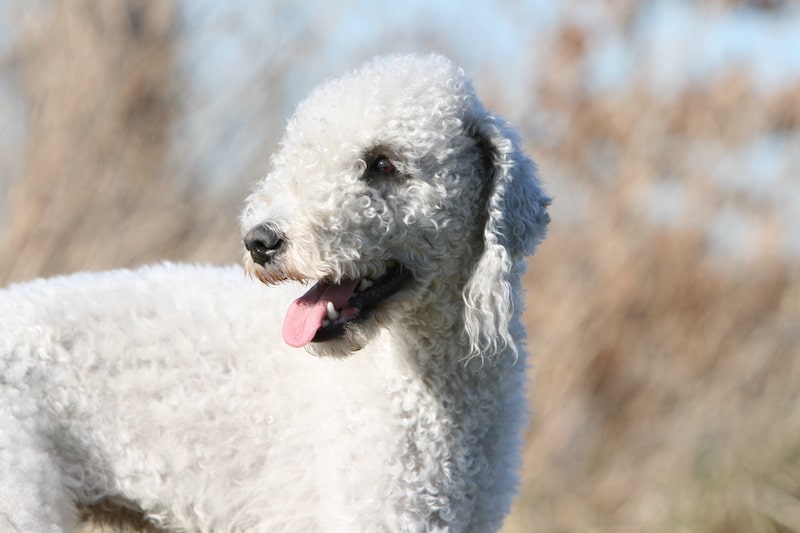
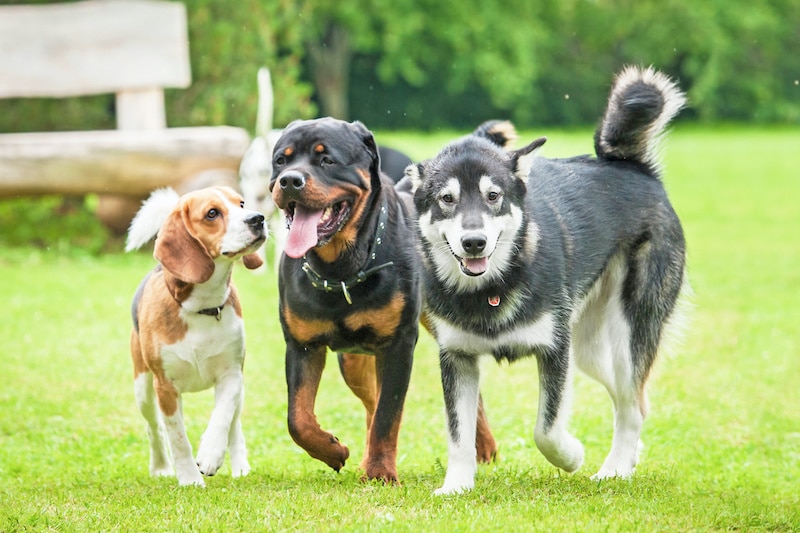
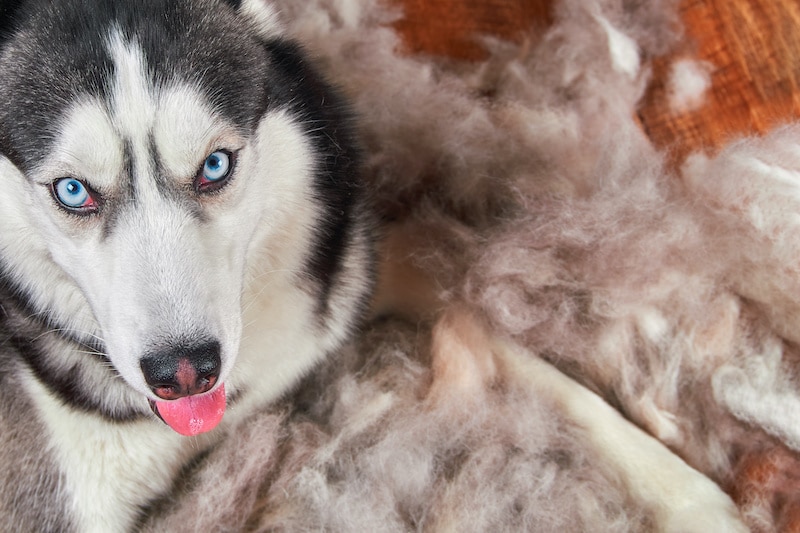

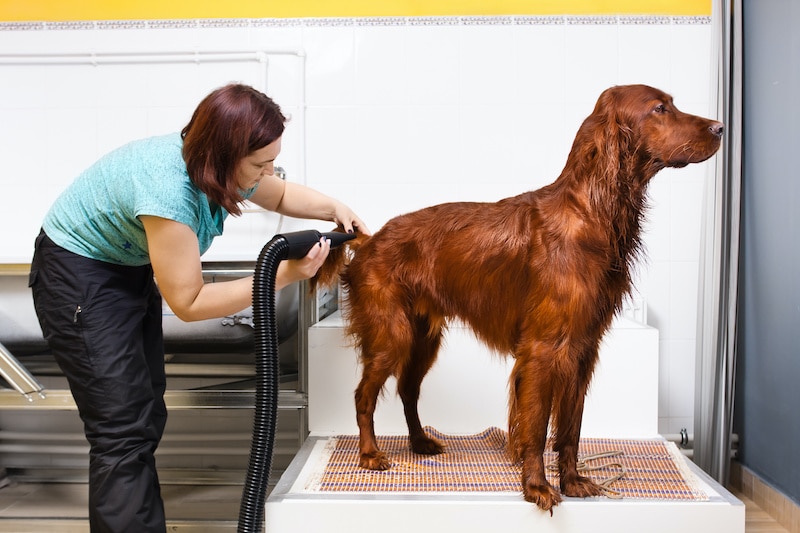
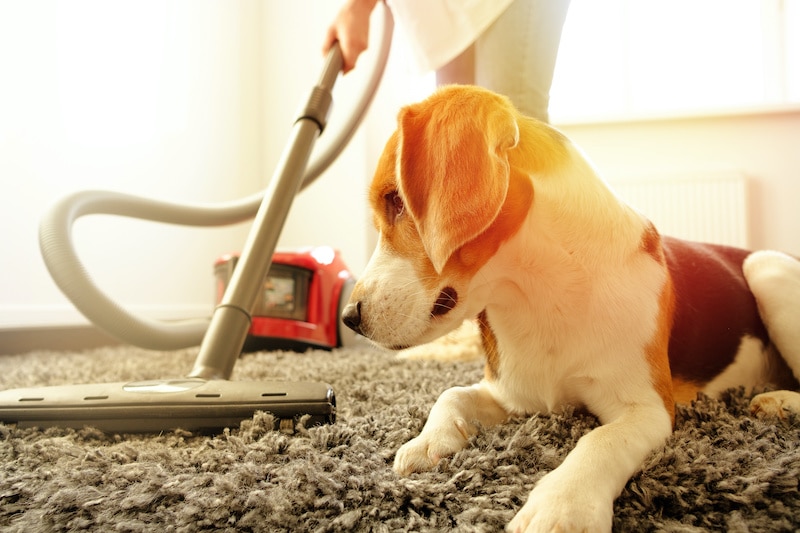

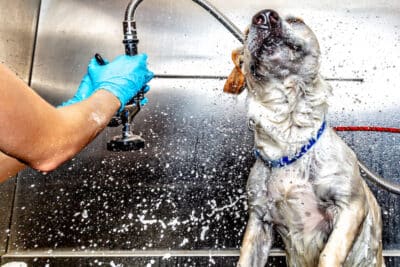
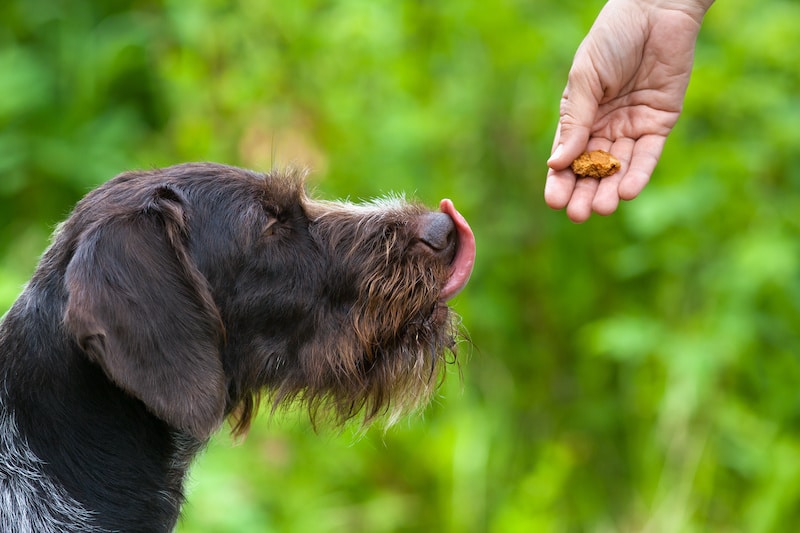
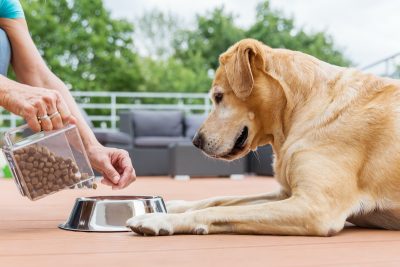
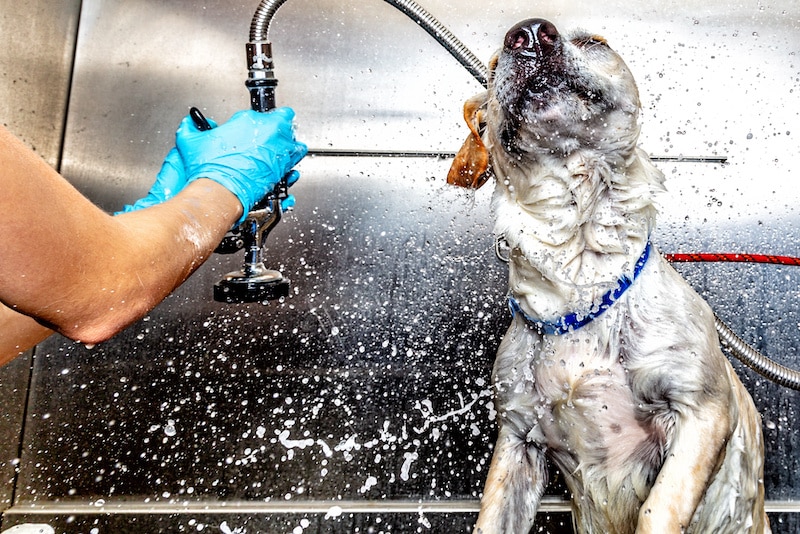
Please note: By submitting a comment using the above comment form, you confirm that you agree with the storage and handling of your data by this site as detailed in our Privacy Policy.